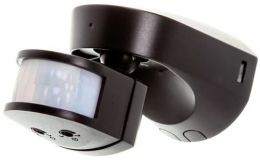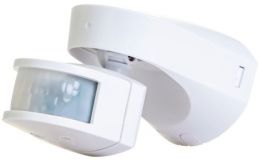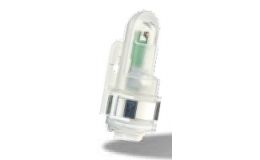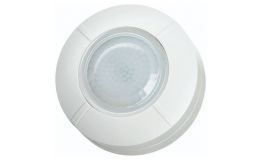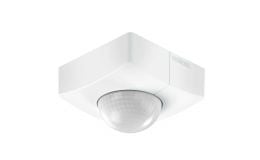Fastlec uses cookies to ensure that we give you the best experience on our website. If you continue we assume that you consent to receive all cookies on the Fastlec website. Read More.
Sensors
Lighting Sensors
A lighting sensor (PIR) is a small, inexpensive device which detects whether a human has moved into or out of the sensor’s range. They are commonly found in numerous appliances used in homes or businesses.
Everything emits low level radiation. The sensor will detect motion and not average infrared levels as it is made up of two halves. The two halves are wired in such a way that if one half sees more or less infrared radiation than the other, the output will move from high or low or vice versa.
How does it work?
The sensor incorporates two slots, each made of a material sensitive to infrared. When the sensor is not sensing any changes it remains inactive but as soon as it senses a change in the amount of IR (such as a warm body) it will intercept one half of the PIR sensor which causes a change between the two halves. When the warm body leaves the sensing area the reverse happens. These changes are what is detected, switching the appliance on and off.
Lenses
PIR sensors are simple devices and vary in price due to their sensitivity. It is the optics and the quality of the Fresnel lens together with the proposed application that will determine choice.
It is he Fresnel lens that condenses light, providing a larger range of IR to the sensor.
General Information
Careful placement of lighting sensors is important to prevent accidental activation. Although the wavelength of infrared radiation to which the chips are sensitive does not penetrate glass very well, a strong infrared source such as from a vehicle headlight or sunlight reflecting from a vehicle window can overload the chip with enough infrared energy to fool the electronics and cause a false alarm. A person moving on the other side of the glass however would not be 'seen' by the PID.
It is also recommended that a PID is not positioned in such a way that any vent could blow hot or cold air onto the surface of the plastic which covers the housing's window. Although air emits a very small amount of infrared energy, the air blowing on the plastic window cover could change the plastic's temperature enough to, once again, fool the electronics.
PIDs can have more than one internal sensing element so that, with the appropriate electronics and Fresnel lens, it can detect direction. Left to right, right to left, up or down and provide an appropriate output signal
-
7 Days Delivery
- In stock
- In stock
- In stock
- In stock
-
3 Days Delivery
-
5 Days Delivery
-
1 Days Delivery
- In stock
- In stock
- In stock
-
3 Days Delivery

